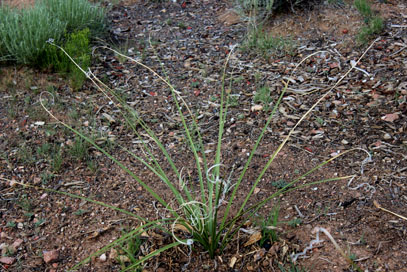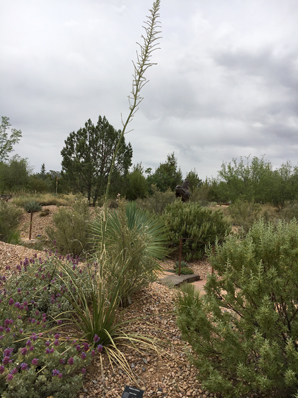 |
 |
Plant |
Plant w/flower stalk |
Ethnobotanical Uses
Food:
"At Isleta Pueblo flour was once made from ground beargrass seeds, and the fruits also were eaten. But care must have been taken not to include the flower stalks in the meal, since these parts contain toxic saponins. This plant is highly poisonous to sheep and goats, though less so to cattle." (Dunmire and Tierney 128)
"(Apache, Chiricahua & Mescalero) Stalks roasted, boiled, or eaten raw. Stalks boiled, dried, and stored to be used as vegetables. (Apache, Western) Young stalks placed in fire, peeled, and eaten. (Isleta) Seeds made into a meal and used to make bread. Fruit eaten fresh. Seeds made into a meal and used to make mush. Fruit eaten preserved." (Moerman 358)
Medicine:
"Also at Isleta drinking the liquid from boiled beargrass roots has been considered to be a remedy for pneumonia and rheumatism." (Dunmire and Tierney 128)
"(Isleta) Decoction of root taken for pneumonia and lung hemorrhages." (Moerman 357)
Other Uses:
"Earlier in this century beargrass seems to have been the preferred material for making baskets, especially among the more southerly Rio Grande pueblos. The process was described by two biology professors at the University of New Mexico: 'In the manufacture of the baskets the leaves were first plaited on the floor into a mat of the desired size. The mat was then fashioned into a shallow basket by tying the edges outward over a stick which was bent in the form of a circle. In the case of small containers the stick was usually removed although in the very large ones it often remained to serve as a rim. Such baskets were very coarsely constructed, and never decorated since they were not an article of trade but made with the idea of serving as inexpensive containers (Bell and Castetter 1941)." (Dunmire and Tierney 128)
"--- at least one pueblo has used the dried seeds in the rattles made from cultivated gourds." (Dunmire and Tierney 128)